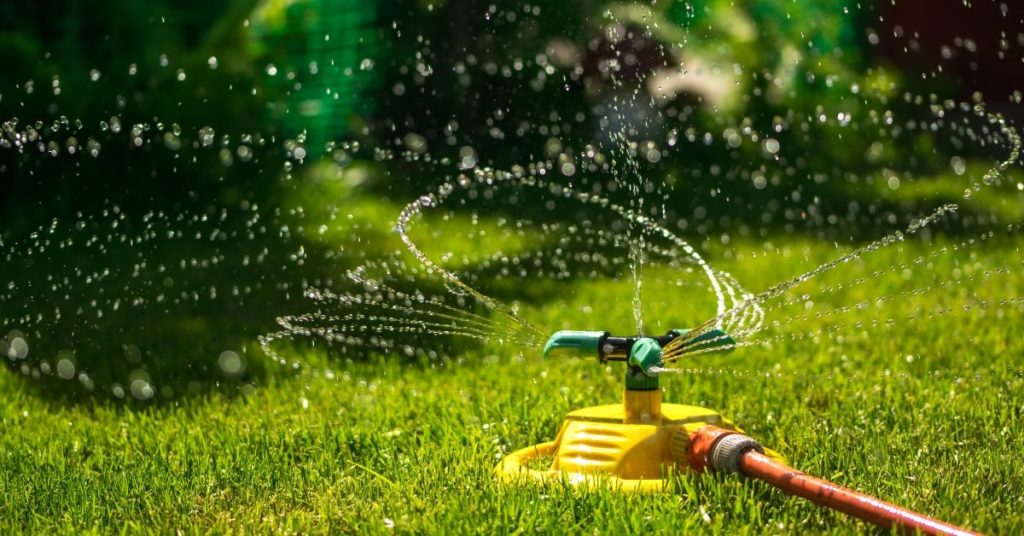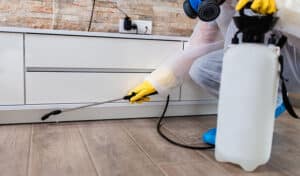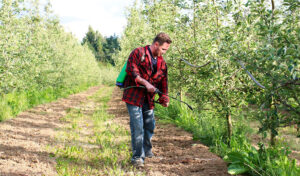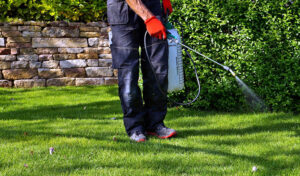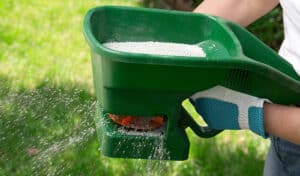Cool-Season Grass Versus Warm-Season Grass
The first step to properly caring for your grass is to determine what kind of grass you have. Cool season grasses and warm season grasses react differently to different things.
Cool season grasses include Fescue, Bluegrass, Rye Grow, and others. These grasses grow best when temperatures are in the 60s F. Cool grasses thrive when they are moved to about 3-4 inches tall. They do better when they are a little longer.
Warm season grasses include Zoysia, Bermuda, Centipede, St. Augustine, and others. These grasses thrive in the 70s F. They do better a little shorter and should be moved to about 2-3 inches.
Water Wisely
Getting your lawn the right amount of water it needs to thrive is vital, especially in the heat of summer. The amount of water your lawn needs will vary based on your weather, climate, type of grass, and the size of your lawn. But as a general rule, lawns need at least one inch of water every week. When the heat is severe and the climate is dry, like a Utah summer, your lawn will need more water.
Watering your lawn deeply and less frequently will encourage your lawn to take deep roots and make it more resistant to drought. If you have missed some watering and your lawn is starting to brown, you cannot water it back to life. Let it go dormant through the summer and stay that way until fall. It can recover once the weather changes. Trying to bring it back from dormancy during the heat of the summer is not a good idea.
Watering early in the day will help to reduce evaporation that can so easily happen in hot weather. Morning watering can also reduce fungal growth.
Mowing Tips
Raise your mower blade for taller grass in the summer. Long grass is more drought-tolerant and a better option for hot weather. Tall grass will also grow deeper roots and help to provide more shade to the ground, preventing weeds.
After mowing, use the grass clippings for mulch to keep moisture levels steadier. Be sure that you are mowing regularly. You should not be cutting more than 1/3 of a grass blade at a time. Your grass will grow stronger and healthier is it is tripped instead of chopped.
Keep your lawn mower’s blade sharp. A dull blade is more likely to tear your grass. A sharp blade can provide a clean cut and minimize stress—which can be extremely important, especially during hot temperatures.
Don’t Over Fertilize
Fertilizing is certainly good for your lawn but be wary of over fertilizing. During the heat of the summer, you should avoid promoting more growth. New grass is vulnerable without deep roots and can easily die in the hot weather. Stop fertilizing about a month before summer temperatures hit. Fertilization is best done in the spring.
Keep your lawn the envy of your neighbors this summer with a little help from Utah Lawn Care expert – Summit Lawn and Pest Control.


